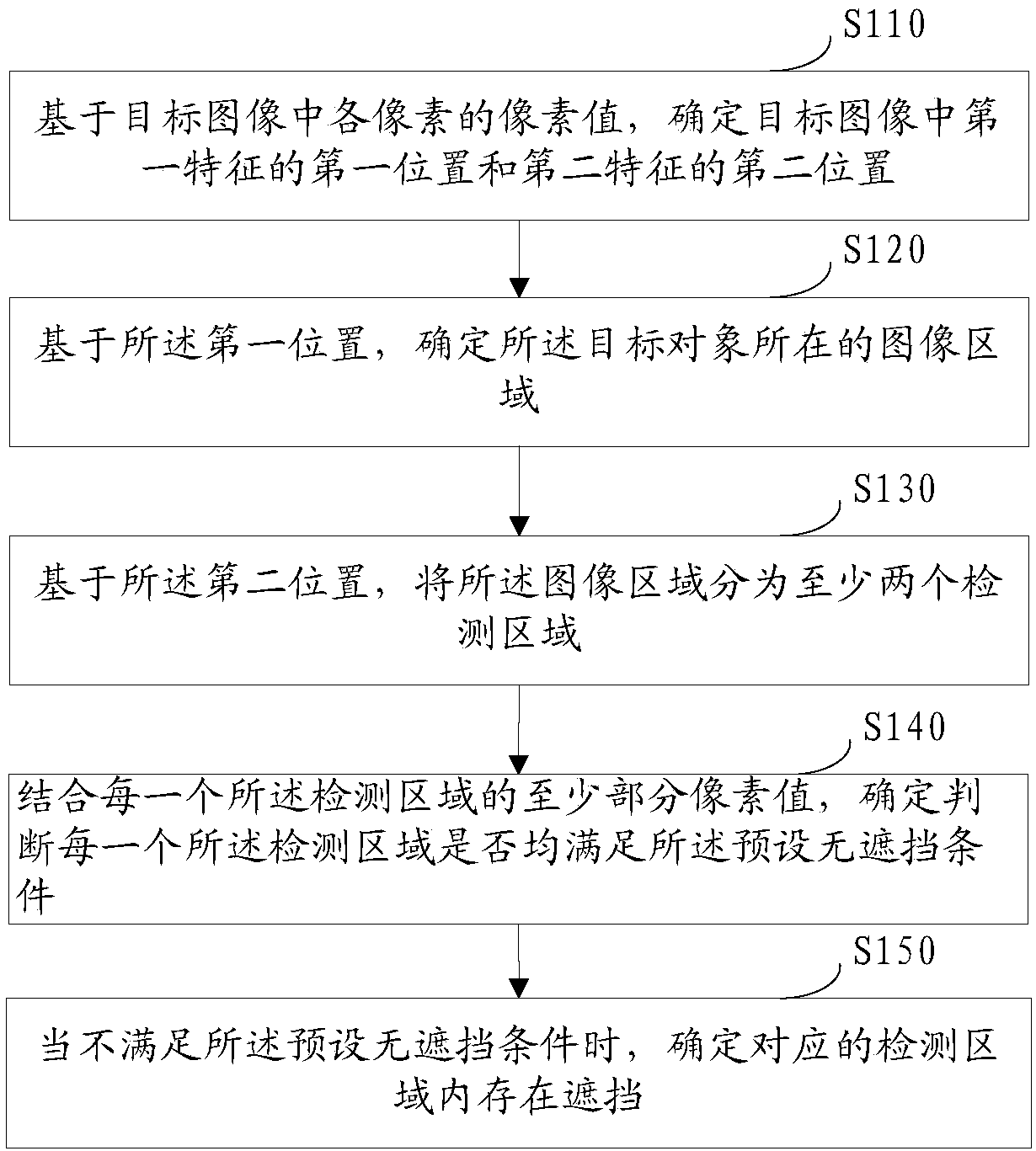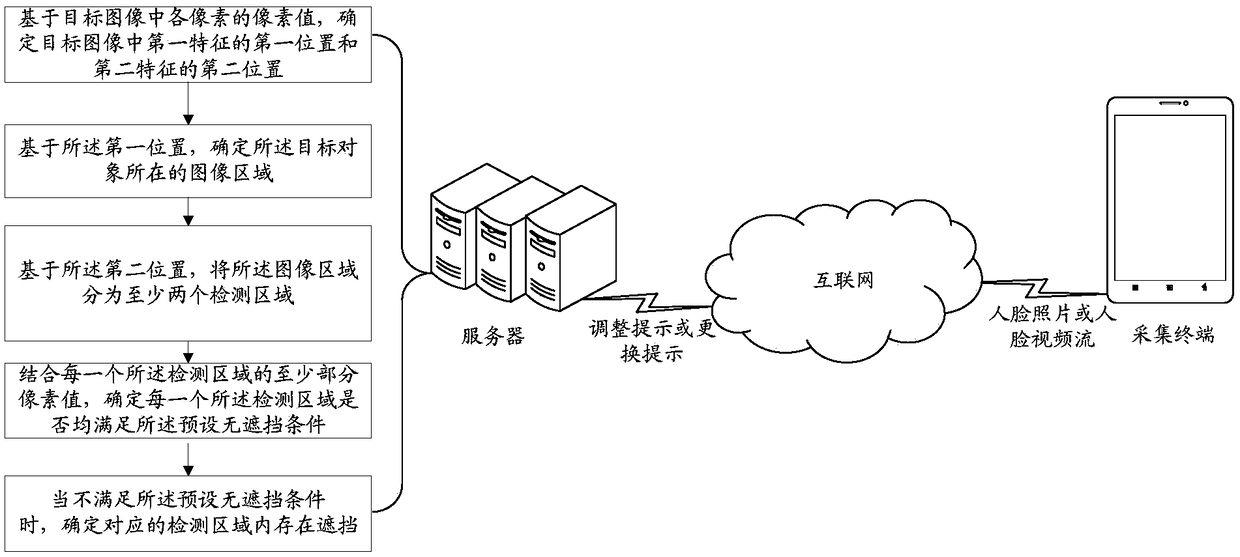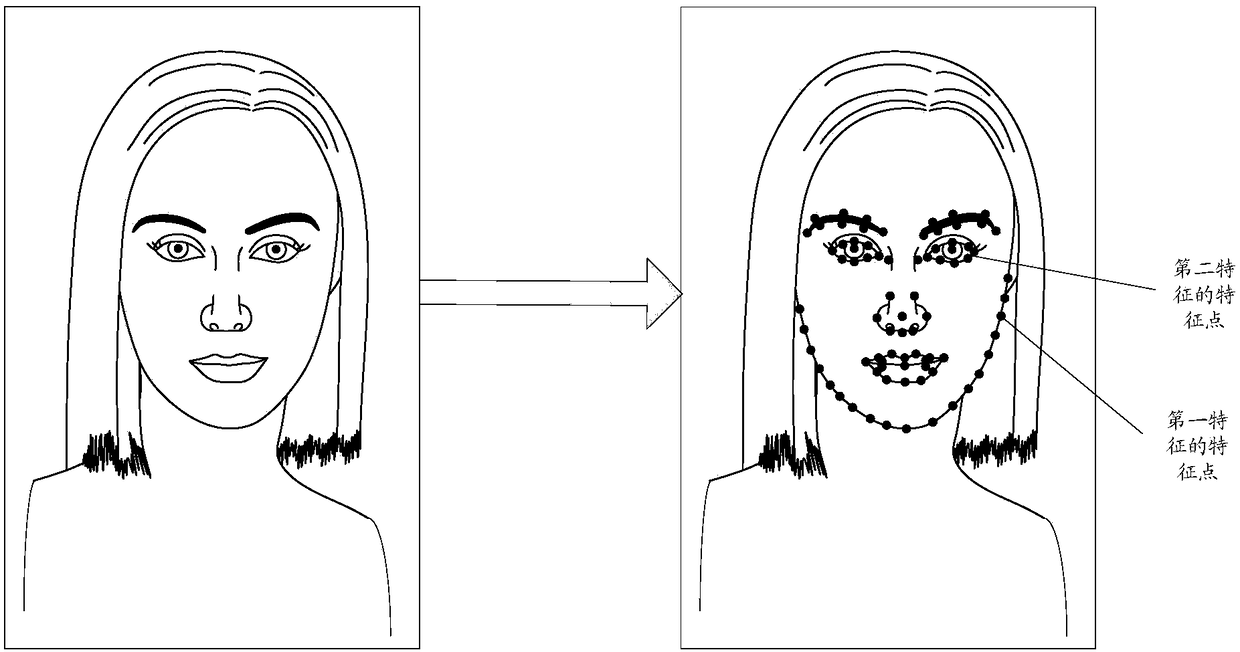Method and device for detecting whether target object is blocked, electronic equipment and storage medium
一种目标对象、遮挡检测的技术,应用在信息领域,能够解决遮挡检测计算量大、精确度低等问题,达到减少计算量大、减少计算复杂的效果
- Summary
- Abstract
- Description
- Claims
- Application Information
AI Technical Summary
Problems solved by technology
Method used
Image
Examples
example 1
[0152] This example proposes a set of methods for automatically detecting facial occlusions. When facial occlusions are detected, it can prompt to change photos or prompt for precautions in taking photos or photography.
[0153] First, by performing face detection marking on input photos or video streams containing faces;
[0154] After the image area where the face is located is determined based on the face detection mark, the block-blocked detection area is selected for the face mark result.
[0155] Carry out skin color detection on the detection area respectively, and automatically determine whether the corresponding detection area is covered by the face based on the skin color detection result.
[0156] If there is occlusion, a prompt to change the photo or adjust the head position can be given according to the scene.
[0157] The detection method provided in this example can effectively detect facial occlusion in most face scenes, and the detection speed is fast.
[01...
example 2
[0202] Such as Figure 10 , this example provides another face occlusion detection method, including:
[0203] Determine whether there is a face photo or an image frame including a face input; the image frame here can be an integral part of the video stream, if it enters the next step, otherwise return to this step;
[0204] The face detection mark is specifically: performing feature detection on a face photo or an image frame including a face;
[0205] Divide the image area of the face according to the marker points to obtain the detection area, and calibrate the skin color area threshold of each detection area according to the statistical samples;
[0206] Perform skin color detection for each detection area;
[0207] Judging whether the detected actual skin color area is greater than the skin color area threshold;
[0208] When the skin color detection area of all partitions is greater than the area threshold, it is determined that the face is unoccluded;
[0209] W...
PUM
 Login to View More
Login to View More Abstract
Description
Claims
Application Information
 Login to View More
Login to View More - R&D
- Intellectual Property
- Life Sciences
- Materials
- Tech Scout
- Unparalleled Data Quality
- Higher Quality Content
- 60% Fewer Hallucinations
Browse by: Latest US Patents, China's latest patents, Technical Efficacy Thesaurus, Application Domain, Technology Topic, Popular Technical Reports.
© 2025 PatSnap. All rights reserved.Legal|Privacy policy|Modern Slavery Act Transparency Statement|Sitemap|About US| Contact US: help@patsnap.com



